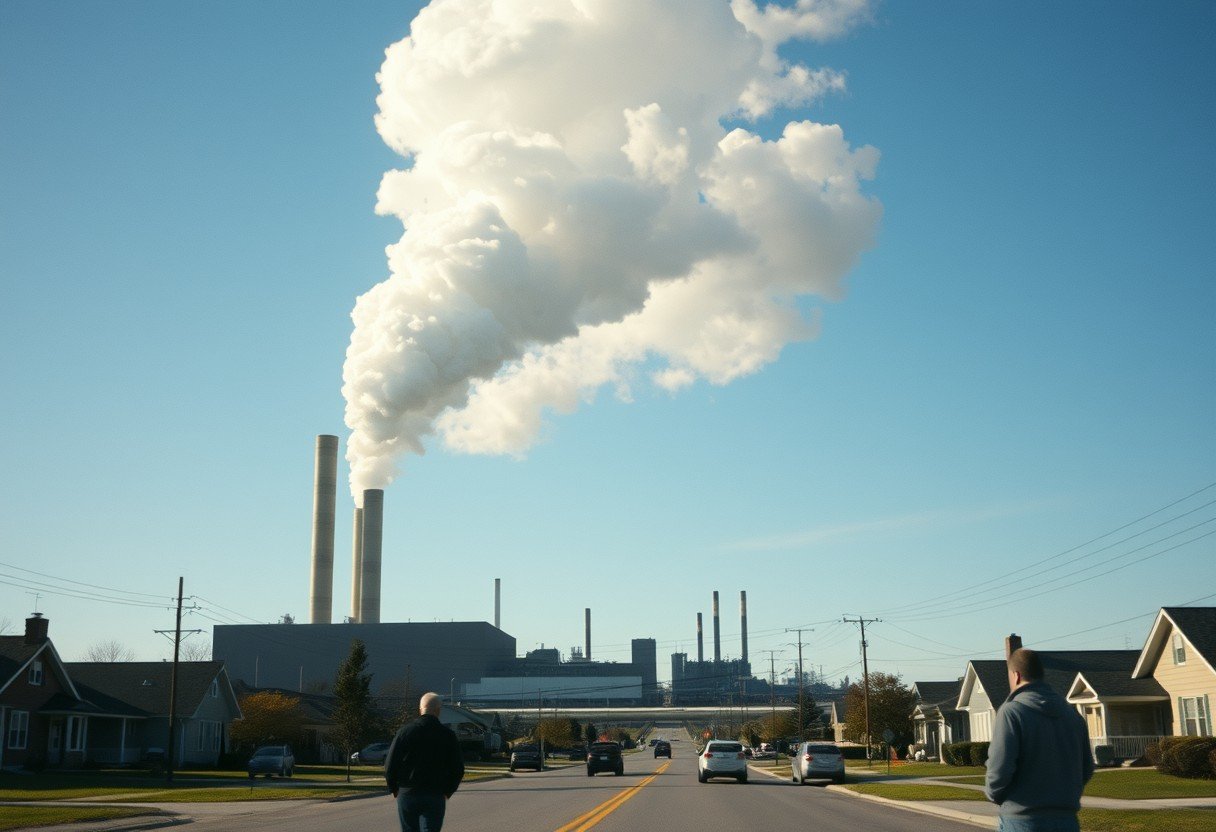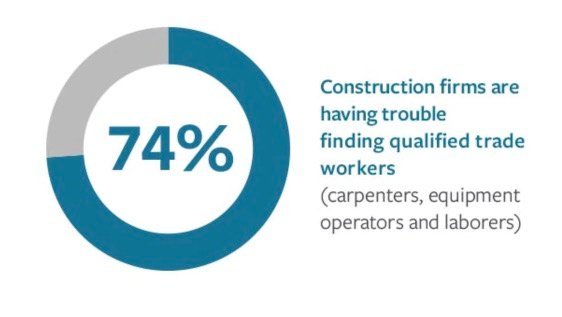A factory releasing large amounts of chlorofluorocarbons, or CFCs, into the air can feel like a distant problem. However, these invisible chemicals have a very real and direct impact on your health, environment, and even your wallet. They destroy the protective ozone layer and heat up the planet, leading to serious risks like skin cancer and extreme weather. Understanding how these emissions affect you is the first step toward protecting yourself and your community.
What are CFCs and Why are they a Concern?
Chlorofluorocarbons (CFCs) are chemical compounds created by humans. For many years, they were widely used in products we use every day. Think of them as the key ingredient in old refrigerators, air conditioners, and aerosol spray cans like hairspray.
Their popularity came from the fact that they are not flammable and not very toxic in direct, short-term contact. However, scientists later discovered their dark side.
The main problem with CFCs is their incredible stability. They don’t break down easily in the lower atmosphere. Instead, they drift all the way up to the stratosphere. Once in the stratosphere, UV radiation from the sun finally breaks them apart, releasing chlorine atoms that destroy the ozone layer.
The Dual Threat of Ozone Depletion and Climate Change
CFC emissions attack our planet on two major fronts. They are infamous for creating the “hole” in the ozone layer, but they are also incredibly powerful greenhouse gases that contribute significantly to global warming.
The depletion of the ozone layer is a serious concern for your health. This layer acts as the Earth’s natural sunscreen, blocking most of the sun’s harmful ultraviolet (UV) radiation. With less ozone, more UV rays reach the ground, increasing your risk of sunburn, premature aging, and serious health conditions.
Beyond the ozone issue, CFCs are also a major climate change problem. They are exceptionally good at trapping heat in the atmosphere. In fact, some CFCs are thousands of times more potent at warming the planet than carbon dioxide over the same period.
| Gas | Global Warming Potential (GWP) |
|---|---|
| Carbon Dioxide (CO2) | 1 |
| Methane (CH4) | 28 |
| CFC-12 (Common Refrigerant) | 10,200 |
This means that even small amounts of CFC emissions can have a massive impact on rising global temperatures, leading to more frequent and intense heatwaves, storms, and flooding in your area.
How CFC Emissions Directly Harm Your Health
The health risks from a factory emitting CFCs are both direct and indirect. The most well-known danger comes from the ozone depletion they cause, which dramatically increases your exposure to harmful UV radiation.
This increased UV exposure is linked to several serious health problems. The World Health Organization (WHO) estimates that a 10 percent decrease in ozone levels will result in an additional 300,000 non-melanoma and 4,500 melanoma skin cancer cases.
Other health effects related to UV exposure include:
- Cataracts and Eye Damage: Prolonged exposure to UV radiation is a leading cause of cataracts, a clouding of the eye’s lens that can lead to blindness.
- Weakened Immune System: Overexposure to UV rays can suppress the proper functioning of the body’s immune system, making you more vulnerable to infections.
- Skin Aging: UV radiation accelerates the breakdown of collagen, leading to premature wrinkles and sunspots.
For those living near the emitting factory, direct exposure can also lead to respiratory issues, such as coughing and shortness of breath, as well as skin and eye irritation.
The Hidden Economic Costs of CFC Pollution
The impact of CFC emissions goes beyond health and the environment; it directly affects your finances and the local economy. Environmental damage often leads to significant economic costs that are passed down to consumers and taxpayers.
For example, increased UV radiation can damage agricultural crops, leading to smaller harvests and higher food prices at your local grocery store. Fisheries can also be harmed as UV rays penetrate the water and affect the plankton that form the base of the marine food web.
Furthermore, there is a direct cost to our healthcare system. Treating the rising number of skin cancer and cataract cases places a heavy burden on healthcare services, which can lead to higher insurance premiums for everyone. On a community level, a polluting factory can lower property values and deter tourism, hurting the local economy and potentially leading to job losses.
Global and National Efforts to Control CFCs
Recognizing the immense danger, the global community came together to address the problem of ozone-depleting substances. The most important step was the creation of the Montreal Protocol in 1987.
This international treaty is widely considered one of the most successful environmental agreements in history. It mandated the gradual phase-out of the production and use of CFCs and other harmful chemicals. Thanks to the protocol, the ozone layer is slowly healing and is projected to recover by the middle of this century.
On a national level, countries enforce the rules of the Montreal Protocol through their own laws and regulations. This includes:
- Banning the production and import of CFCs.
- Requiring the safe disposal of old appliances containing CFCs.
- Issuing heavy fines and penalties for companies that illegally emit these substances.
These regulations are crucial for ensuring that industries switch to safer, more environmentally friendly alternatives.
How Communities Can Fight Back Against Emissions
When a local factory is emitting harmful chemicals, it’s easy to feel powerless. However, community action can be a powerful force for change. Concerned citizens can work together to hold polluters accountable and protect their environment.
Public awareness campaigns are a great starting point. By educating your neighbors about the dangers of CFC emissions, you can build a strong, unified voice. This can involve sharing information on social media, organizing town hall meetings, or speaking with local news outlets.
Local initiatives can also make a significant difference. You can get involved by supporting grassroots organizations that monitor local air quality, advocating for stricter enforcement of environmental laws, and encouraging local businesses to adopt sustainable practices. Your participation sends a clear message that your community will not tolerate pollution that threatens its health and future.
Frequently Asked Questions about CFC Emissions
What exactly are CFCs and why are they so dangerous?
Chlorofluorocarbons (CFCs) are man-made chemicals once used in things like refrigerators and aerosol sprays. They are dangerous because they float up to the stratosphere and destroy the ozone layer, which protects us from the sun’s harmful UV radiation.
How does a factory releasing CFCs affect my local area?
Locally, you could face poorer air quality, which may cause respiratory problems. Environmentally, the long-term effects of climate change, driven by potent greenhouse gases like CFCs, can lead to more extreme weather patterns in your region.
What are the long-term environmental consequences of CFC emissions?
The primary long-term effects are severe damage to the ozone layer and a significant contribution to global warming. This leads to climate change, disrupting ecosystems, threatening agriculture, and causing a decline in biodiversity worldwide.
Are there laws against factories emitting CFCs?
Yes, the Montreal Protocol is an international treaty that has led most countries to phase out the production and use of CFCs. National laws enforce this with strict regulations and penalties for illegal emissions, but compliance and enforcement can sometimes be an issue.
What can I do to help with the CFC problem?
You can advocate for strong environmental regulations and support companies that use eco-friendly alternatives. Also, ensure that old refrigerators and air conditioners are disposed of properly so the CFCs inside them can be safely recovered and destroyed.









Leave a Comment